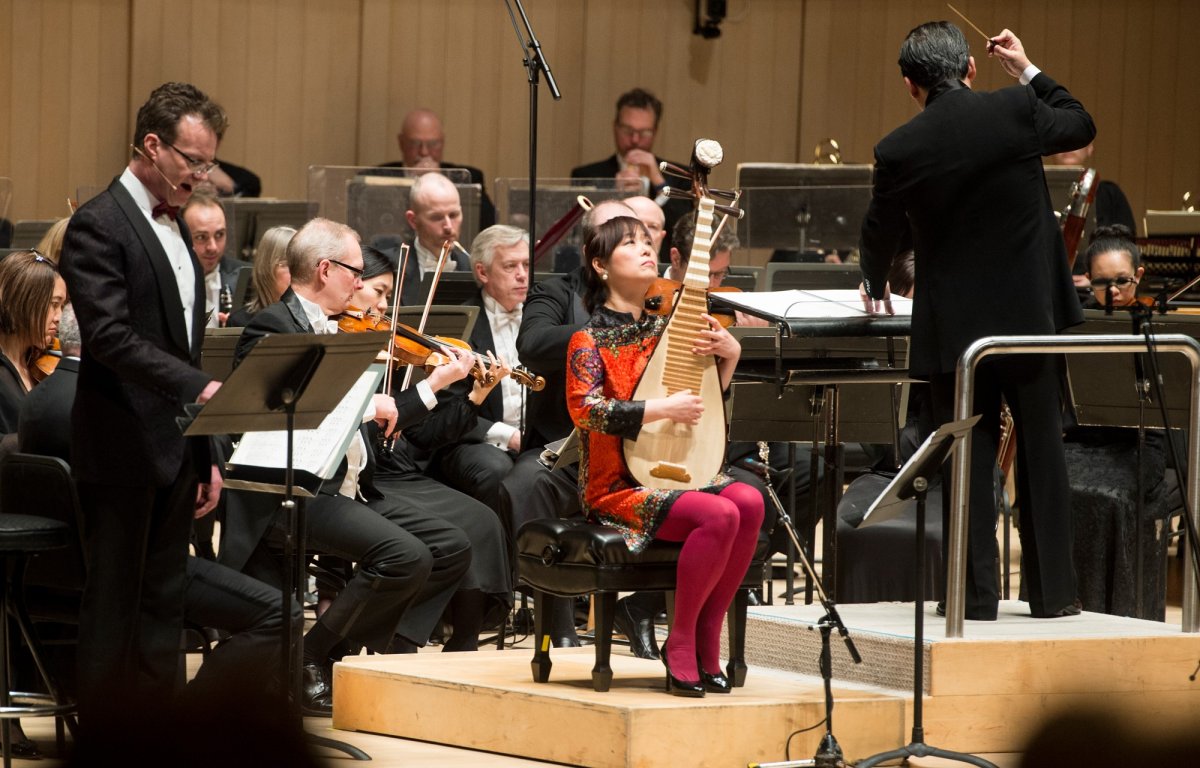When Carlie Howell was a child, she was fortunate that her family had season tickets to the orchestra. She can still remember the moment she became enthralled with the basses while listening to a Beethoven symphony. She zeroed in on the section for the rest of the evening and soon took up the instrument herself. Today, some 25 years later, she’s playing the bass professionally in a variety of musical styles. She’s also helping young people find their bass through a suite of e-learning lesson plans she created for the Toronto Symphony Orchestra’s Canada Mosaic initiative.

“The technology is being used in a meaningful way that creates access, deepens understanding and helps young people connect with music they might not otherwise hear,” says Howell, who is also a seasoned music educator. “Instead of having to sit quietly and struggle to see, they can follow their ear and their interest and get excited about the music and the musicians.”
Canada Mosaic is a Signature Project of Canada 150 and is designed to celebrate the nation’s diverse musical landscape and share it with audiences of all ages. More than 50 new works were commissioned and presented across the country last year. Some performances were recorded and used as the basis for the innovative e-learning platform, which is free for all and available online to be used at home or in the classroom.
Children can watch several performances and toggle between different sections of the orchestra to see the musicians and the conductor up close. Other highlights include recordings of O Canada in 12 different languages, an interactive timeline of Canadian music and an introduction to film music through the animated short DAM! The Story of Kit the Beaver. Lesson plans for teachers of Grades 1 through 8 accompany many videos, and Howell says they’re simple, straightforward and accessible for all teachers whether or not they have a music background. “The lesson plans help to make age-appropriate connections for students, so they’re not just listening without purpose or learning historical facts about the pieces, but really connecting with the musical content,” she adds.
Scientific research has shown time and time again that studying music benefits the intellectual, social and personal development of young people. Musical education improves academic performance, strengthens social connections and helps build a foundation for artful expression and communication, Howell says.
However, a study published in the International Journal of Music Education found that the positive effects on personal and social development only occur if engaging with music is an enjoyable and rewarding experience, which is the TSO’s objective with the entertaining and interactive musical activities for students.
Whether students discover that basketball was invented by a Canadian through the musical tribute Buzz Beater or gain an understanding of Inuit culture through an introduction to the game of throat singing, the experience is sure to stay with them and perhaps inspire them to pick up an instrument themselves.
“Music is one of the most meaningful tools of communication we have as human beings, and it has been used throughout human history to express ideas and emotions and reflect the world around us,” says Howell. “Learning about music unlocks this language for children, and gives them access to a rich human history.”


